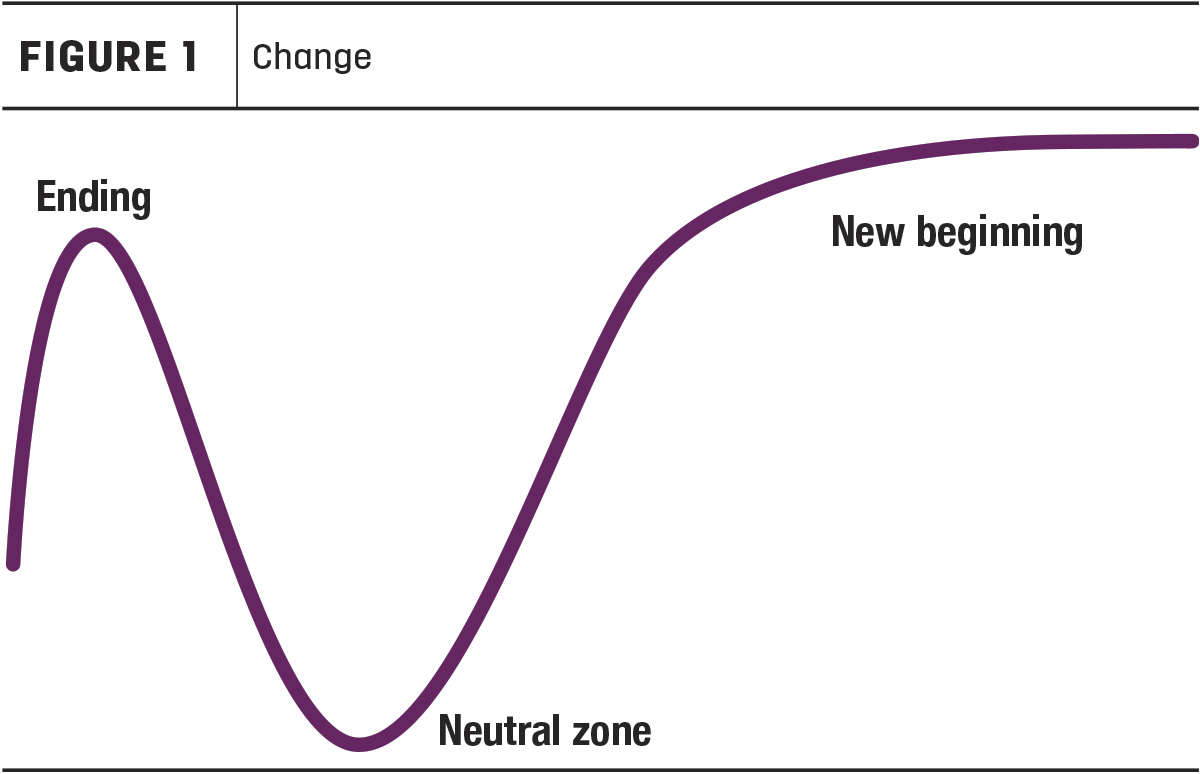In today’s industry, dairy producers are faced with a multitude of changes – milk markets, joint ventures, next-generation leaders, emerging technologies and weather, just to name a few. While these changes are difficult to navigate, understanding the process of change and how one can respond provides opportunity to flourish in the trenches of a transformation.
“If you have a better understanding of response to change, that leads to thoughts on how you might thrive through it,” Becky Pertzborn said. “What can you tweak to better adapt?”
Pertzborn presented “Thriving through change” during the Vita Plus Midwest Dairy Conference June 13. Pertzborn is a Vita Plus employee and accredited Insights Discovery practitioner.
A change can fit into one of three categories: shock, evolutionary and strategic. Identifying which type of change one may be facing is the first step in processing and handling the situation. Shock change is often quick and sudden, evolutionary change is not sudden but the transformation has been nudged, and strategic change is a deliberate action.
Examples of evolutionary change may include younger generations becoming more involved on the farm or the dairy transitioning from a parlor to automated milking system. On the other hand, a strategic change really dives deep into understanding if the change makes sense and is feasible, such as expanding the dairy business or not.
Despite the varying types of change, it is the psychological transition, personal to each individual, that Pertzborn focused her talk on.
“Every minute of every day there is something changing, and we learn to adapt every single day,” Pertzborn said. “It’s the emotions, the management, adapting to others but finding ways internally to lower stress and keep us moving forward and feeling good.”
A change curve (see Figure 1) encompasses that psychological transition, first beginning with a peak representing the ending, a trough for the neutral zone, followed by another peak for the new beginning. And emotions help identify which part of the change curve one might be in. Endings are often associated with anger, sadness, fear or shock, among others; the neutral zone might feel like skepticism, confusion and uncertainty; while new beginnings bring feelings of enthusiasm, hope, understanding and perhaps even anxiety for the unknown.

“We have to spend time in the neutral zone before moving on to new beginnings,” Pertzborn said. “If we go from endings to new beginnings without a chance in the neutral zone, we’re still thinking about the old ways and wondering why we can’t keep things the way they were. We have to give ourselves space and time to get into the full change cycle.”
While in the trough, be mindful of the stress you may be undergoing. Good stress – eustress – is boredom and comfort, while bad stress – distress – is strain and panic, and will build with change.
To withstand this period of change and properly deal with the stress at hand, Pertzborn encouraged self-awareness and self-care, as well as asking for help early on and often.
“Awareness creates choice, and the more choices we have, the more we feel empowered,” she said. “Stay confident in your ability to handle challenging situations. Focus on what is in your control rather than getting wrapped up in the change that is in front of us so much that you get lost.”
Now, take this concept of change and apply it to a work environment.
Pertzborn suggested having team discussions about looming change, which allows everyone involved in the change to identify it and process at their own pace. Transparency and collaboration are crucial.
“Absolutely we can collaborate sooner,” Pertzborn said. “Where there are options and the more transparent we can be, the better. It’s the collaboration over the years and trust built that helps propel change.”
Collaboration will also help varying personalities cope through the neutral zone. Some may accept the change by wanting to swiftly move through the phases, some may be more extroverted and draw people into the change with their broad base of thinking, some will have patience and trust throughout the process, and yet some will take that transitional time as an opportunity to dig deep and find alternative solutions.
Change is difficult, whether it only affects one person or an entire team. Change is adaptable when the process is understood and time is taken to work through the trenches.
“Put aside previous assumptions of what looking through the lens of change is,” Pertzborn said. “Focus on the transition.”






